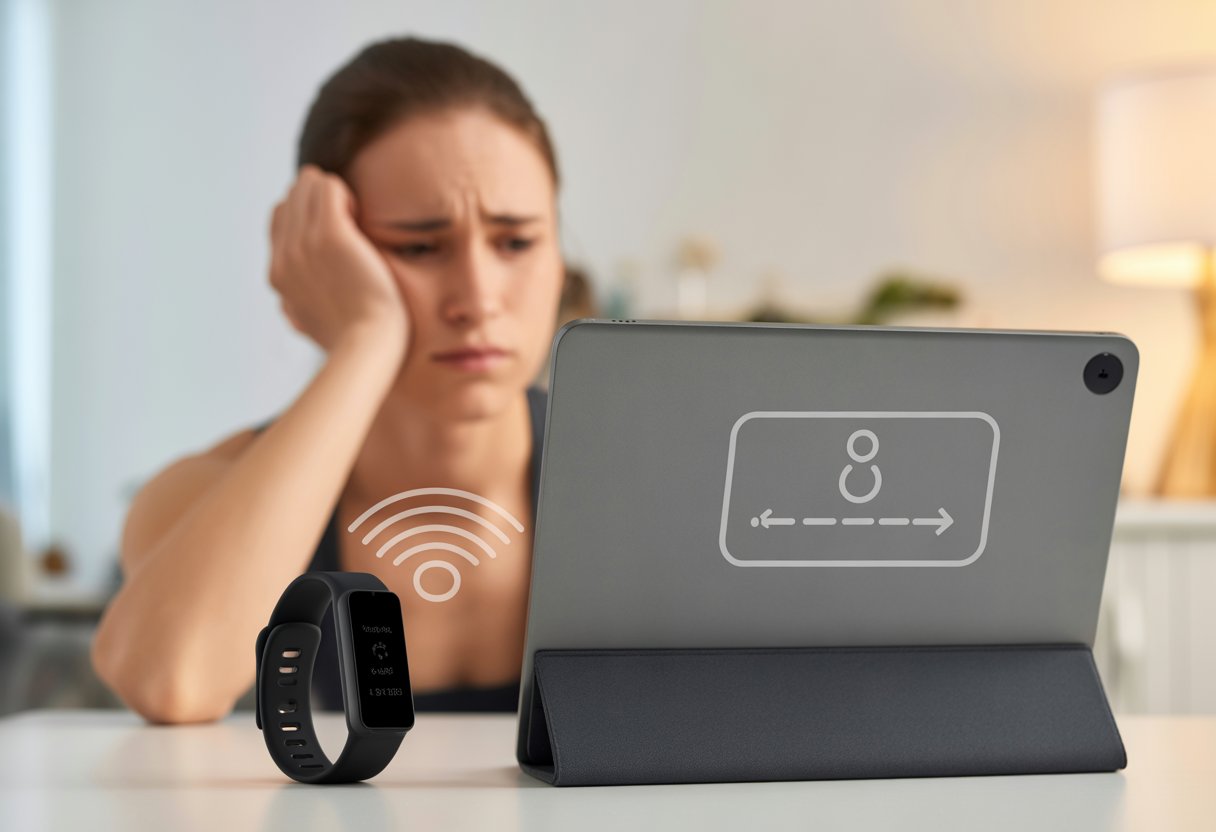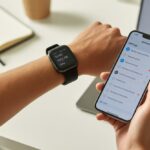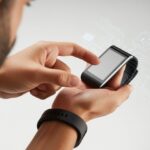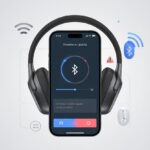Let’s be real—nothing screams “welcome to the future” like a fitness tracker on your wrist, silently judging your snack choices and counting every step. But every now and then, the tracker just refuses to talk to your tablet, and it’s hard not to imagine a little gremlin inside, causing chaos. Usually, the tracker won’t connect because Bluetooth is acting up, the app is cranky, or your device settings are out of whack.

Maybe you’ve paired too many gadgets, or maybe your app just wants a little update and attention—Fitbit connection issues are notorious for this. Sometimes, a restart or quick permission check is all it takes.
Before you feel personally attacked by your own technology, let’s dig into why these problems happen and what you can actually do about it.
Don’t panic—your fitness goals aren’t doomed yet. We’re about to jump into some fixes, so your tracker can get back to cheering you on (and maybe shaming you a little less).
Understanding Connectivity Basics
Honestly, sometimes our trackers and tablets just don’t want to cooperate. Before you start blaming the nearest wall, let’s figure out how these little gadgets actually talk to each other.
How Fitness Trackers Communicate with Tablets
Most trackers and tablets use Bluetooth as their invisible handshake. It’s the digital thread that lets your tracker beam over your step count or wild sleep stats, all without a single wire.
Both your tracker and tablet need Bluetooth turned on for this to work. If there’s an app involved, you’ll need that open and running too.
Some trackers get jealous if you try to pair them with your phone and tablet at the same time. Most only want to connect to one device, so don’t expect them to multitask.
And let’s not forget distance. Keep your devices close—think 10 meters or less. Any farther and they’ll lose each other faster than you lose spare socks.
Common Connection Requirements
Before you start yelling at the sky, let’s check the basics that trip people up all the time.
- Bluetooth needs to be on for both tablet and tracker. It’s easy to forget.
- App installation is a must. If your tracker’s brand nags you for a special app, download it.
- Charge your devices. Dead batteries are the enemy of connectivity.
- Avoid Bluetooth chaos. If you’ve got a dozen Bluetooth things fighting for attention, your tablet might just give up. Turn off extras for a bit.
If you’ve done all this and your gadgets still ghost you, try restarting both. Seriously. Turning it off and on again works more often than you’d think—just ask the Fitbit support community.
Bluetooth Blunders: Connection Problems
If your tracker won’t connect, Bluetooth is usually the culprit. Sometimes it’s just a matter of checking settings, or making sure both devices are actually ready to pair.
Checking Bluetooth Settings on Tablets
Finding the Bluetooth settings on your tablet can feel like a weird scavenger hunt. You dig through “Settings,” wander through “Connections,” and finally spot the Bluetooth toggle.
Make sure Bluetooth is on (look for the symbol at the top of your screen if you want proof). If it’s already on but still not working, clear out old or unused devices from your tablet’s list. Too many saved gadgets can confuse things, so give your tablet a clean slate. If you need more help, there’s a handy Bluetooth fix guide for Android.
A restart can also work wonders. Sometimes, your tablet just needs a quick nap. If things are still weird, check for software updates—Bluetooth can get picky about outdated systems.
Enabling Pairing Mode on Your Fitness Tracker
Don’t skip this step—it’s crucial. Your tracker needs to be in pairing mode before anything good happens. Usually, there’s a button combo or a setting in the app to get it ready.
If you skip this, your tracker will just ignore you. Instructions vary, so check the manual or support site for your model.
If your tracker is stubborn, try turning Bluetooth off and on again before entering pairing mode. It’s like nudging your tracker and saying, “Hey, pay attention!” Once you see your tracker pop up on your tablet, you’re in business. If not, try again with both devices side by side.
Why Devices May Fail to Pair
Bluetooth is a bit moody. If your devices are too far apart, that could be the entire problem—keep them close.
Low battery is another classic villain. Some gadgets flat-out refuse to pair when they’re almost dead. Always charge your tracker and tablet first.
Other wireless signals, like Wi-Fi, can sometimes mess things up. Turning off Wi-Fi for a minute has fixed things for more than a few frustrated users. There’s even a thread about it: why am I having trouble having tablet find my Bluetooth devices.
And don’t forget to check if Bluetooth is actually on. Sometimes the solution is embarrassingly simple.
App Mishaps: Software Issues and Syncing Woes
Sometimes, it’s not the tracker or tablet—it’s the app that’s causing all the drama. Apps can make or break your tracker experience, and a single glitch can leave you counting steps in your head (and nobody wants that).
Troubles with the Fitbit App
The Fitbit app is both a lifesaver and a pain, depending on its mood. When it’s cranky, syncing crawls—or just doesn’t happen.
First, make sure Bluetooth is on and connected. That’s the most common issue.
If the app doesn’t recognize your device, try restarting the app or your tablet. Sometimes that’s enough. If not, try reinstalling the Fitbit app or logging out and back in. Still stuck? Remove the tracker from the app, then add it again like you’re starting fresh.
And seriously, don’t skip updates. An old Fitbit app is about as helpful as a chocolate teapot.
Fitbit Troubleshooting Quick List:
- Bluetooth on
- Restart app and tablet
- Reinstall or update app
- Remove and re-add device
Garmin Connect App Glitches
The Garmin Connect app is notorious for slow syncing and random issues. Outdated app versions, old tablet software, or a stubborn tracker usually cause these headaches.
If your Garmin won’t sync, check your Wi-Fi or data connection. Restart both the tracker and the app.
If that doesn’t do it, remove the device from the app and add it again. Sometimes that’s the only way to snap it out of its funk.
Permissions are a big deal with Garmin. Make sure the app can run in the background and use Bluetooth. And, of course, keep the app updated. Outdated versions love to cause mysterious errors.
Common Garmin Gripes:
- Update tablet and app
- Wi-Fi or data must be on
- Double-check permissions
- Remove and add device if stuck
General App Compatibility Troubles
Some apps just don’t get along with certain tablets. The usual suspects? Operating system mismatches, missing permissions, or Bluetooth acting weird.
If the tracker’s app won’t install or keeps crashing, check for updates for both the app and your tablet’s OS. Some older tablets can’t handle the latest app versions, so peek at the requirements in the app store.
Here’s a quick checklist:
| Issue | Solution |
|---|---|
| App won’t install | Update OS, check compatibility |
| Sync not working | Check permissions, Bluetooth on |
| Missing features | Update app and device software |
Dealing with these app issues takes patience, a bit of humor, and maybe a lucky break. If all else fails, hey, you can always pace around and pretend your tracker is watching.
Device-Specific Drama: Android, iOS, and Tablets
Let’s be honest, our fitness trackers always seem to act up when we actually need them. The connection chaos depends on what device you’re using—Android, iOS, or maybe a Samsung. Each one brings its own flavor of nonsense.
Android Devices: Unique Challenges
Android phones and tablets are a wild bunch with all their different versions and quirks. Connecting a tracker on Android can turn into a comedy show, thanks to old Bluetooth versions or weird permission settings.
Restart both your phone and tracker, then try pairing again (restart tips). If that flops, check if the fitness app has permission to use Bluetooth, Location, and Storage.
Sometimes, your tracker just won’t show up in the Bluetooth menu. If that happens, “forget” the tracker in Bluetooth settings and start fresh. Clearing your fitness app’s data can work wonders too (more app tips).
And if nothing else works, update both your tracker’s firmware and your phone’s OS. You might have to re-sync your steps and heart rate, but at least your tracker will stop acting possessed.
iPhone, iPad, and iOS Shenanigans
Pairing a fitness tracker with an iPhone or iPad usually goes pretty smoothly, but that doesn’t mean we’re drama-free. iOS blocks devices if we skip those required permissions.
We have to say “yes” to Bluetooth and allow notifications for the app. If we don’t, things get cranky fast.
iOS also clings to old device pairings. If our tracker refuses to connect, we should head into Bluetooth settings and remove any ghosted or “Not Connected” trackers.
After that, restart both devices. Sometimes, that’s all it takes.
iPads can stir up extra trouble since not every fitness tracker works with tablets. If an app won’t find the tracker, it’s worth checking if it even supports iPad before we start yelling at the screen.
When all the settings look right but it still won’t work, reinstalling the app sometimes nudges things back into shape.
Samsung Phone & Tablet Pairing Oddities
Samsung phones and tablets really have minds of their own. Even when we use the right app, these devices sometimes just refuse to connect a tracker or randomly disconnect during the day.
The classic fix? Restart both the watch and the phone or tablet (Samsung’s steps). We should also make sure the Galaxy Wearable or fitness app is up to date.
A shocking number of problems just disappear with a simple app update. Seriously, why do we always forget that?
Special tip for Samsung: check that no battery optimization settings are turning off the app or Bluetooth in the background. If nothing else works, unpair the tracker, delete the app, reinstall it, and try again.
We end up feeling like tech-support wizards, but hey, at least we get our step counts back from limbo.
Troubleshooting Your Tech Tantrum
Nothing ruins a step-counting streak like a stubborn tracker refusing to connect to our tablet. Before we toss it across the room, let’s focus on what we can actually control.
Restarts, battery checks, and network resets are our first line of defense.
Rebooting Devices for a Fresh Start
Let’s be honest—when in doubt, we reboot. It’s the classic, techie way to tell our gadgets, “Snap out of it!”
We should power off both our fitness tracker and our tablet. Count to ten (or hum a song chorus) and then power them back on.
It might sound basic, but a simple restart often kicks out those invisible tech gremlins. This refreshes Bluetooth and software connections.
If our tracker still acts like it doesn’t know us, try restarting Bluetooth by switching it off and then on again. Sometimes it just needs a little nudge.
For the more dramatic among us, removing the tracker from our device’s Bluetooth list and re-pairing it can work wonders.
Some users find success after following these steps, as seen in this Android device pairing problems discussion.
Eliminating Battery Problems
Nothing kills the vibe like finding out our tracker is as tired as we are after a long walk. Low battery is one of the main reasons our fitness trackers throw connection tantrums.
We always want to make sure both the tracker and tablet are well-charged before we start troubleshooting. Plug that tracker in and let it recharge.
Even a device that turns on can act buggy if the battery is almost empty. Some trackers just refuse to sync if they don’t have enough power.
If our tablet is running low, it can drop Bluetooth connections and disrupt syncing. Before we blame the tracker, we should check battery percentages.
This avoids that classic “Why won’t you work? Oh… never mind” moment.
Resetting Network Settings
If we’ve rebooted and charged everything with zero luck, it might be time for a more serious trick. Network settings get messy—think of them like a sock drawer after laundry day.
Resetting Bluetooth or Wi-Fi settings can help clear out old, useless connections. On our tablet, we can:
- Go to Settings > Connections or Network Settings (depends on the device)
- Tap Bluetooth
- Remove our fitness tracker from the paired device list
- Reconnect the tracker via the app instead of only Bluetooth, which is a common tip in this Runmefit app connection issues guide
After the reset, we might need to re-pair other devices like headphones. But our fitness tracker gets a fresh shot at connecting—hopefully, tantrum-free.
Other Interferences and Hidden Obstacles
Sometimes, our fitness tracker struggles to connect because the world around us throws up invisible barriers. We have to outsmart our surroundings and those tech gremlins to get things working.
Environmental Factors Affecting Bluetooth Signals
Bluetooth is great—until it isn’t. Our fancy gadgets talk to each other using signals that can get blocked by thick walls, closed doors, or even that mysterious pile of laundry we keep ignoring.
If we’ve got a bunch of Bluetooth devices fighting for attention, things can get a little wild. Turning off other Bluetooth devices helps prevent our tracker from turning into a wallflower at the signal party.
Wi-Fi routers, microwaves, and even baby monitors can mess with Bluetooth. Sometimes it feels like the whole house is plotting against us.
If our connection issue only happens in certain rooms, try moving to a space with fewer signal-hogging objects. It might just work.
Checking for Updates and Compatibility
It’s tempting to ignore those popups asking us to update, but sometimes our gadgets genuinely need a little TLC. Fitness trackers and tablets need the latest software so they can “speak the same language.”
When updates are missing, our devices may look at each other and shrug, clueless about how to connect. Before we give up, let’s check for updates on both devices.
We can usually do this in the settings menu. Also, some older tablets just can’t vibe with newer trackers because their Bluetooth versions aren’t compatible.
It’s worth checking our model’s compatibility online to make sure they can actually team up. If not, we might need to consider a backup plan or a device upgrade.
For more details, see this page on Fitbit device syncing problems.
Missing Features and Syncing Limitations
We rely on our fitness trackers and tablets to play nice, so we expect everything to just work. But when things don’t sync, we’re left scratching our heads and mumbling about missing features or quirky limitations.
Limitations in Heart Rate Data Transmission
Sometimes, our fitness tracker acts like a stubborn pet. It just refuses to share some of its most prized data—like heart rate—with our tablet.
This usually happens because certain tablets or fitness tracker apps just aren’t friends with every heart rate feature. Some apps only support basic step counting or activity data, while heart rate data gets left stranded.
Why does this happen?
- Bluetooth Confusion: Many fitness bands use Bluetooth, but if our tablet’s Bluetooth version is too old, syncing heart rate data is like trying to text with two tin cans and a string.
- App Limitations: Some fitness apps have their own secret club, where only certain devices can share full heart rate data. We might see basic stats, but not those juicy BPM numbers.
- Incompatible Hardware: If our tablet doesn’t support certain sensor profiles, the tracker can’t deliver the data, no matter how much we ask.
If we want heart rate to sync, the app, tracker, and tablet all need to speak the same digital language. Otherwise, it’s just a bad game of telephone for our fitness data.
Unsupported Features on Specific Tablets
Our tablets can be pretty picky about which features they actually support. Sometimes the app’s ready, the tracker’s eager, but the tablet just isn’t up for it. That’s when features like sleep tracking, workout history, or syncing reminders just vanish into thin air.
Here are a few issues we run into:
- Operating System Restrictions: Some tablets only run older versions of Android or iOS. They just can’t handle the updates our tracker needs. It’s like trying to run marathon software on a tablet that only wants to stroll.
- Reduced App Functionality: Developers often focus on phones and leave tablets out. That means some features or settings just don’t show up. For example, sometimes workouts logged on our tracker won’t sync with our tablet’s app—folks have seen this with certain Samsung Health setups.
- Broken Syncing Links: Even if we check all the right boxes, syncing can still fail because of device quirks or weird compatibility issues. Restarting both devices or reinstalling the app sometimes fixes it. Other times, we just have to laugh and accept technology’s mood swings.
If we want a smooth syncing experience, we should make sure our tablet gets support from both the tracker and its app. No one wants to get stuck with outdated tech.
- Why do my Bluetooth headphones keep resetting? Solving the Mystery of Rebooting Ears - January 5, 2026
- Is WHOOP Worth It for Runners, Cyclists, and Weightlifters or Just Another Expensive Wrist Buddy? - January 5, 2026
- Best Fitness Trackers Under $200 That Won’t Make Your Wallet Sweat - January 4, 2026






